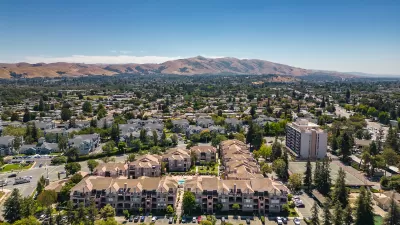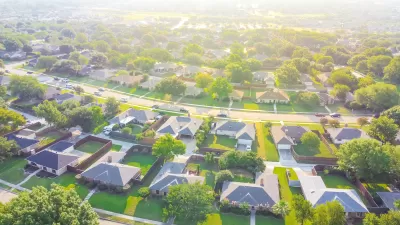As California continues to grapple with staggering housing issues, France's experience offers lessons about the kinds of housing policies and strategies that work.

France could provide a useful example of a way out of the housing crisis that California faces, writes Yonah Freemark. "How were French officials able to do something that has so far eluded California’s leaders? Local, regional, and national leaders worked together to prioritize housing growth."
Freemark points to two factors behind California’s housing problems: inadequate housing production and insufficient support for the state’s poorest residents. France is also struggling with affordable housing issues, he notes, but a slew of reforms has resulted in a significant increase in housing construction in the last few years.
France is funding affordable housing, identifying and using publicly owned land, and implementing zoning regulations that allow for small-scale infill. In addition, municipalities now have to step up rather than impede the development of affordable housing.
"National mandates require 25 percent of housing in every city to be affordable to low- and moderate-income families by 2025. Cities that don’t comply face fines and even the use of eminent domain to make room for affordable development," writes Freemark.
California could take similar steps to address housing and improve the quality of life of residents, says Freemark. "State officials, perhaps inspired by France, must act quickly to fund additional affordable housing and increase construction to make up for a decades-long deficit."
FULL STORY: How the French are fixing a housing crisis comparable to California’s

Manufactured Crisis: Losing the Nation’s Largest Source of Unsubsidized Affordable Housing
Manufactured housing communities have long been an affordable housing option for millions of people living in the U.S., but that affordability is disappearing rapidly. How did we get here?

Americans May Be Stuck — But Why?
Americans are moving a lot less than they once did, and that is a problem. While Yoni Applebaum, in his highly-publicized article Stuck, gets the reasons badly wrong, it's still important to ask: why are we moving so much less than before?

Using Old Oil and Gas Wells for Green Energy Storage
Penn State researchers have found that repurposing abandoned oil and gas wells for geothermal-assisted compressed-air energy storage can boost efficiency, reduce environmental risks, and support clean energy and job transitions.

Updating LA’s Tree Rules Could Bring More Shade to Underserved Neighborhoods
A new USC study finds that relaxing Los Angeles’ outdated tree planting guidelines could significantly expand urban tree canopy and reduce shade disparities in lower-income neighborhoods, though infrastructure investments are also needed.

California's Canal Solar Projects Aim to Conserve Resources and Expand Clean Energy
California’s Project Nexus has begun generating electricity from solar panels installed over irrigation canals, with researchers and state agencies exploring statewide expansion to conserve water and boost clean energy production.

HHS Staff Cuts Gut Energy Assistance Program
The full staff of a federal program that distributes heating and cooling assistance for low-income families was laid off, jeopardizing the program’s operations.
Urban Design for Planners 1: Software Tools
This six-course series explores essential urban design concepts using open source software and equips planners with the tools they need to participate fully in the urban design process.
Planning for Universal Design
Learn the tools for implementing Universal Design in planning regulations.
Heyer Gruel & Associates PA
City of Moreno Valley
Institute for Housing and Urban Development Studies (IHS)
City of Grandview
Harvard GSD Executive Education
Salt Lake City
NYU Wagner Graduate School of Public Service
City of Cambridge, Maryland





























